Welcome to the fascinating world of African mythology, a rich tapestry woven with intriguing tales of gods and goddesses, creation stories, and symbolism. This comprehensive guide aims to unravel the mysteries and complexities of African mythology, providing you with a deeper understanding of the diverse cultures and beliefs that have shaped the continent. We will delve into the captivating creation myths of Yoruba and Zulu mythology, explore the major deities such as Anansi, Osiris, Oya, and Shango, and examine the regional variations in African mythology across West, East, Central, and Southern Africa. Along the way, we will also uncover the symbolism and iconography that permeate African mythology and delve into its lasting influence on modern culture. Get ready to embark on a journey that will open your eyes to the vibrant world of African mythology.
Contents
- African Mythology: An Overview
- African Creation Myths
- Major Gods and Goddesses in African Mythology
- Regional Variations in African Mythology
- Symbolism and Iconography in African Mythology
- Influence of African Mythology on Modern Culture
- Conclusion
-
Frequently Asked Questions
- 1. What is the significance of African mythology?
- 2. Are there common themes in African creation myths?
- 3. Who are some prominent gods and goddesses in African mythology?
- 4. What role does symbolism play in African mythology?
- 5. How does African mythology influence modern culture?
- 6. Are there regional variations in African mythology?
- 7. How were African mythologies preserved without written texts?
- 8. Was there a connection between African mythology and daily life?
- 9. Can African mythology be seen as a form of spirituality?
- 10. How has colonization impacted African mythology?
- References
-
Frequently Asked Questions
- 1. Who were the major gods and goddesses in African mythology?
- 2. What are the regional variations in African mythology?
- 3. What are some famous African creation myths?
- 4. How did African mythology influence modern culture?
- 5. What role does Anansi play in African mythology?
- 6. What is the symbolism and iconography in African mythology?
- 7. Are there any female deities in African mythology?
- 8. How were humans created in African mythology?
- 9. What are some key themes in African mythology?
- 10. How do African myths explain natural phenomena?
- References
- Read More
African Mythology: An Overview
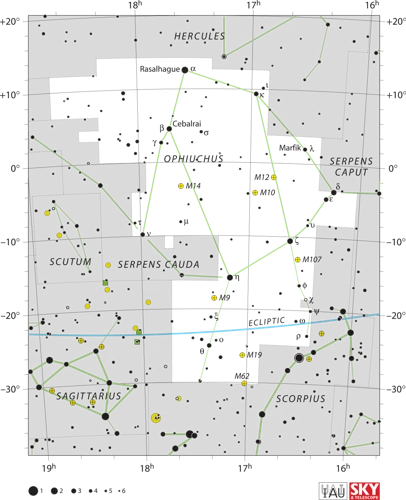
African mythology is a vast and varied collection of beliefs, legends, and stories that have been passed down through generations across the African continent. It encompasses the diverse cultures and traditions of different regions, offering a unique perspective on the origins of humanity, the natural world, and the gods and goddesses that inhabit it. From the creation myths that explain how the world came into being to the tales of powerful deities and supernatural beings, African mythology provides a glimpse into the spiritual and cultural heritage of its people. It is characterized by its oral tradition, where stories are shared and handed down orally rather than through written texts. This has allowed for a certain fluidity and adaptability, with each retelling adding its own nuances and interpretations. African mythology celebrates the interconnectedness of humans with nature and the importance of community and ancestral wisdom. It is a fascinating realm of imagination and symbolism that continues to captivate and inspire to this day.
African Creation Myths
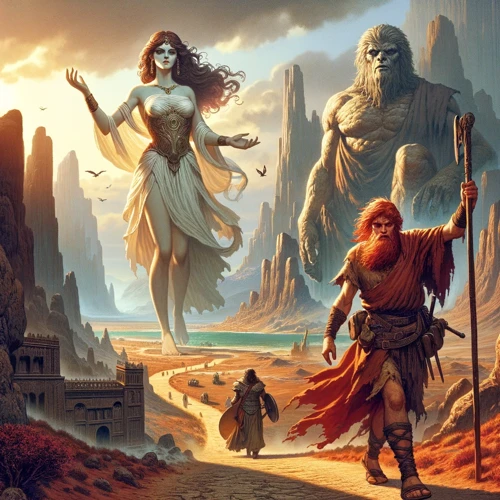
African creation myths are a captivating aspect of African mythology, offering diverse and fascinating explanations for the origins of the world and humanity. These myths provide insight into the beliefs and values held by different African cultures, showcasing the richness and complexity of their cosmologies. One such creation story is that of Yoruba mythology, which tells of the supreme deity Olodumare and the divine energies that brought forth the universe. Another intriguing creation myth comes from Zulu mythology, where the god Unkulunkulu emerges from the primeval waters, shaping the land and giving life to the first humans. These myths not only provide narratives of creation but also serve as a foundation for understanding the relationships between humans, gods, and the natural world. Through these stories, African cultures express their awe and reverence for the mysteries of existence, inviting us to ponder the profound questions of our own origins and purpose.
1. The Creation Story of Yoruba Mythology
In the rich tapestry of Yoruba mythology, the creation story holds a special place. According to Yoruba belief, the world was originally an empty expanse of water known as “Olokun.” In this vast ocean, there existed only one divinity, Olorun, who lived in the sky. Olokun, represented as the female aspect of the primordial force, desired to create land and life. To accomplish this, Olorun sent Oduduwa, a revered deity, to bring forth solid land from the waters. Oduduwa descended from the sky with a chain and a snail shell filled with soil. He emptied the soil onto the water, and it began to expand and solidify, forming the earth. This creation story symbolizes the interplay between the divine forces of the sky and the primordial ocean. It highlights the belief in the power of divinity to shape and transform the world. The Yoruba creation story is just one example of the captivating narratives that comprise African mythology, each with its own unique symbolism and significance. It is an essential aspect of the cultural heritage of the Yoruba people and continues to be passed down through generations, contributing to the rich oral tradition of Africa. For more insight into the celestial aspects of Yoruba mythology, you can explore the interpretations of the constellation Leo, which holds significance in Yoruba cosmology.
2. The Creation Story of Zulu Mythology
In Zulu mythology, the creation story begins with the supreme being, Unkulunkulu, who emerged from the primeval reeds of the Uhlanga. Unkulunkulu is believed to be the creator of all things, the first man and the first ancestor. He brought life and order to the world by separating the land from the sky. He also created plants, animals, and the spirits of the ancestors. According to Zulu mythology, Unkulunkulu sent his son, Intando, to Earth to teach the first humans how to live and to establish the clans and societies. Intando brought the gift of fire to mankind and taught them the ways of agriculture, hunting, and gathering. The Zulu creation story emphasizes the sacredness of the natural world and the interconnectedness of all living beings. It reflects the Zulu people’s deep respect for nature, their ancestors, and their cultural traditions. Today, the Zulu people continue to honor their ancestors and maintain their rich mythological heritage through rituals, ceremonies, and storytelling, keeping the ancient wisdom alive for future generations.
Major Gods and Goddesses in African Mythology
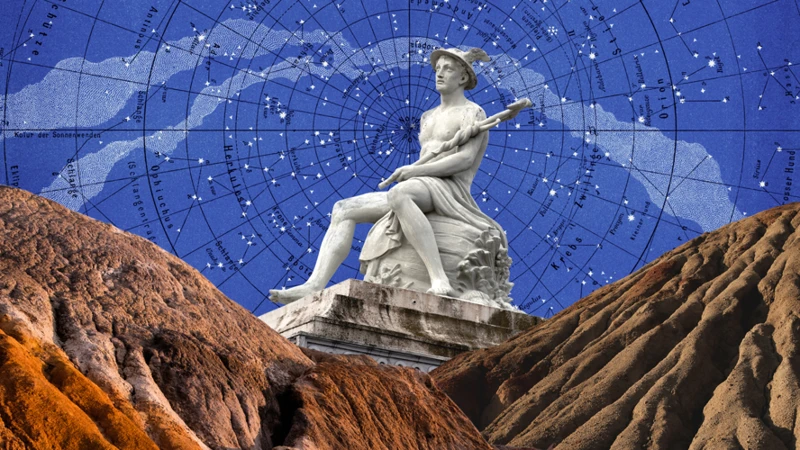
From mischievous tricksters to powerful deities, African mythology is replete with a pantheon of intriguing gods and goddesses. One prominent figure is Anansi, the Spider Trickster known for his cunning and wit. Anansi often weaves intricate webs of deception, outsmarting those around him and imparting valuable lessons through his exploits. Another noteworthy deity is Osiris, the God of the Afterlife, who presides over the judgment of souls and ensures their safe passage to the realm of the dead. His story symbolizes the cycles of life, death, and rebirth. Oya, the Goddess of Wind and Storms, commands the forces of nature, bringing both destruction and renewal. Her fierce and tempestuous nature embodies the power of the elements. Lastly, Shango, the God of Thunder and Lightning, reigns over the skies, unleashing bolts of lightning and rolling thunder with his mighty hammer. These are just a few examples of the captivating gods and goddesses found in African mythology, each with their own unique attributes and significance in the cultural and spiritual landscape of the continent.
1. Anansi – The Spider Trickster
Anansi, the Spider Trickster, is a prominent figure in West African mythology, particularly among the Ashanti people of Ghana. Often depicted as a cunning and mischievous character, Anansi is known for his intelligence and ability to outsmart others through clever schemes and tricks. He is considered a deity of storytelling, wisdom, and creativity. Anansi is often depicted as a spider or a human-spider hybrid, symbolizing his connection to both the natural and supernatural realms. His stories, passed down through generations, serve as moral lessons and entertainment, teaching listeners about the consequences of their actions and the value of wit and resourcefulness. Whether it’s outwitting larger animals or tricking the gods themselves, Anansi’s tales showcase his ability to navigate and manipulate the world around him. His adventures are both humorous and thought-provoking, making him a beloved and enduring character in African folklore. Anansi’s influence extends beyond African mythology, as his stories have traveled with the African diaspora to the Caribbean and the Americas, where they continue to be shared and celebrated today. To learn more about African myths and their interpretation, you can explore the book “Investigating Interpretations: The Constellation Leo” which delves into the symbolism and meanings associated with the celestial objects in African mythology.
2. Osiris – The God of the Afterlife
Osiris, one of the most prominent figures in Egyptian mythology, is revered as the god of the afterlife. He holds a significant role in the ancient Egyptian belief system and is associated with death, resurrection, and the journey to the underworld. Osiris is often depicted as a mummified figure, symbolizing the cycle of life, death, and rebirth. As the judge of the dead, he weighs the hearts of individuals against the Feather of Ma’at, determining their fate in the afterlife. This symbolism reflects the Egyptians’ belief in the importance of leading a just and virtuous life. Osiris also played a vital role in the agricultural cycle, representing the fertility and renewal of the land. His death and subsequent resurrection became a foundational myth for the ancient Egyptians, symbolizing the eternal cycle of life and the promise of new beginnings. The cult of Osiris was widespread and enduring, with temples and rituals dedicated to his worship. Even today, the legacy of Osiris can be seen in the fascination with ancient Egypt and its mythology, captivating audiences worldwide. Intriguingly, Osiris aligns with the concept of immortality associated with the constellation Leo, further emphasizing his connection to the afterlife and everlasting power.
3. Oya – The Goddess of Wind and Storms
Oya, the powerful goddess of wind and storms, holds a prominent place in African mythology. She is often associated with the elements of air and weather, reigning over fierce winds, hurricanes, and lightning storms. Oya’s presence is felt in the roaring of the wind and the electrifying crackle of lightning. In Yoruba mythology, she is seen as a warrior goddess, known for her tempestuous nature and fierce protectiveness. Oya is depicted as a beautiful and strong-willed deity, adorned with a crown or turban and carrying a double-bladed sword. Her association with wind and storms symbolizes the transformative power of nature, as she brings both destruction and rebirth. Oya’s influence extends beyond the physical realm, as she is also regarded as a guardian of the spirit realm and acts as a mediator between the living and the dead. Her complex nature and multifaceted symbolism make her a revered and respected figure in African mythology. To delve deeper into the mythology and symbolism surrounding celestial bodies like Oya, you can explore the interpretations of constellations like Leo, which hold significant meaning in various mythological traditions (source). Understanding these connections can enhance our understanding of the role celestial bodies play in mythology and human consciousness.
4. Shango – The God of Thunder and Lightning
Shango is a prominent deity in African mythology, revered as the god of thunder and lightning. Known by different names in various African cultures, Shango is often depicted as a powerful, masculine figure with a crown on his head and wielding a double-headed axe. His domain over thunder and lightning signifies his control over natural forces and his ability to bring both blessings and destruction. Shango is believed to reside in the sky, and the sound of thunder is said to be the rumbling of his footsteps as he walks across the heavens. He is associated with vitality, passion, and power, and is often called upon for protection, fertility, and strength.
In Yoruba mythology, Shango holds a prominent place as one of the orishas, or divine beings. He is often depicted alongside Oya, the goddess of wind and storms, with whom he shares a passionate and tempestuous relationship. Their union represents the unstoppable force of nature in its most intense forms. Shango’s attributes also extend beyond his association with thunder and lightning. He is considered a warrior and a guardian, and is sometimes associated with justice and the resolution of conflicts.
Shango’s influence can be found not only in African mythology but also in modern culture. His depiction as a powerful deity resonates with many, symbolizing strength, resilience, and the ability to overcome obstacles. His character has inspired numerous artistic representations, including music, dance, and visual arts. Shango’s story serves as a reminder of the forces of nature and the power they hold over our lives. It encourages us to respect and connect with the natural world and its elements. to internal html link.
Regional Variations in African Mythology
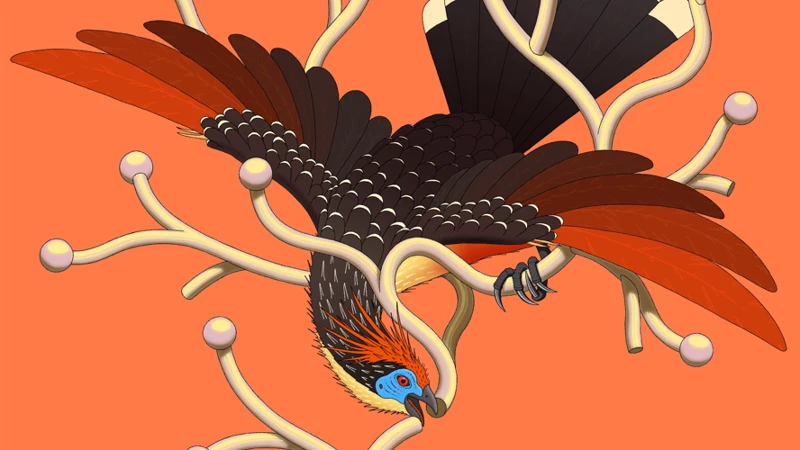
Regional variations in African mythology provide a fascinating insight into the diverse cultures and traditions found across the continent. From West Africa to East Africa, Central Africa to Southern Africa, each region has its own distinct mythological beliefs and stories. In West African mythology, deities such as Ogun, the god of iron and war, and Mami Wata, the water spirit associated with wealth and fertility, hold significant importance. The Yoruba people, in particular, have a complex pantheon of gods and goddesses, including Olorun, the creator of the universe, and Oya, the fierce goddess of wind and storms. Moving eastward, East African mythology is known for its focus on spirits and ancestral worship. The Maasai people, for example, revere Engai, the high god who is considered the creator of all things. Central African mythology often centers around nature spirits and legends of magical beings. The Bantu people believe in a powerful life force called Nkira, while the Kuba people honor the mythical hero Woot, known for his bravery. In Southern African mythology, the San people have rich folklore featuring the tricky and mischievous deity, Kaggen.
Regions | Key Deities | Mythological Themes
———-|———————–|——————
West Africa| Ogun, Mami Wata | War, water spirits, wealth
East Africa| Engai, Ancestors | Ancestral worship, creation
Central Africa| Nkira, Woot | Nature spirits, magical beings
Southern | Kaggen, Anansi | Tricksters, folklore
Each region’s mythology reflects the unique cultural and environmental characteristics of its people. Exploring these variations provides a deeper appreciation for the intricacies and diversity of African mythology, highlighting the richness of the continent’s heritage.
1. West African Mythology
West African mythology is a rich and diverse tapestry of beliefs and stories that have been passed down through generations in the region. It encompasses a wide range of cultures, including the Akan, Yoruba, and Igbo peoples, each with their own unique mythologies and deities. One prominent figure in West African mythology is Anansi, the Spider Trickster. Anansi is known for his cleverness and trickery, often outwitting others through his cunning and wit. He is a beloved character in folktales, symbolizing the importance of intelligence and resourcefulness. Another significant deity in West African mythology is Ogun, the god of iron and warfare. Ogun is revered as a powerful and protective force, associated with strength, courage, and perseverance. He is often depicted with a machete or a hammer, symbolizing his connection to metalworking and civilization. Additionally, Papa Legba is a revered figure in West African mythology, often seen as the gatekeeper between the human world and the spirit realm. He is associated with communication, crossroads, and opportunities. West African mythology is infused with vibrant symbolism and deep cultural significance, reflecting the values and beliefs of the people who have passed down these stories for generations. [Read more about interpreting aspects and understanding the natal chart](/interpreting-aspects-understanding-natal-chart/) to gain a deeper understanding of the complexities and symbolism within West African mythology.
2. East African Mythology
East African mythology is a vibrant tapestry of stories, beliefs, and traditions that reflect the diverse cultures and landscapes of the region. It encompasses countries such as Kenya, Tanzania, Uganda, Rwanda, and Ethiopia. One prominent figure in East African mythology is the god Mulungu, who is revered as the creator of all things and the ruler of the sky. Mulungu is often depicted as a loving and protective deity who maintains balance and harmony in the world. Another important deity in this mythology is the goddess Mawu, often associated with the moon and fertility. Mawu is believed to be responsible for the creation of humans and holds the power of life and death. The Maasai people of East Africa also have their own unique mythology, with tales of their supreme god Enkai and his two sons, Nkai and Nameme. Enkai is both a merciful and vengeful god, believed to control rain, fertility, and the well-being of the Maasai community. These myths and legends of East Africa not only provide insights into the values, traditions, and belief systems of the people but also connect them to the natural world and the forces that govern it. It is through these stories that generations have passed down wisdom, moral lessons, and cultural heritage. The rich and diverse folklore of East Africa continues to shape the identity and spiritual lives of its people, highlighting the intricate relationship between humans, nature, and the divine.
3. Central African Mythology
Central African mythology is a diverse and intricate tapestry of beliefs and stories that have been woven into the cultural fabric of the region. It encompasses a wide range of tribes and communities, each with their own unique myths and legends. One prominent figure in Central African mythology is the god Nzambi, who is revered as the creator of the world and all living beings. Nzambi is often depicted as a benevolent deity, responsible for bringing life and order to the universe. Another important character in Central African mythology is the god Nkuba, who is associated with the sun and is believed to bring light and warmth to the earth. Nkuba is worshipped for his vital role in sustaining life and is often depicted as a powerful and radiant figure. Central African mythology also includes a rich tapestry of animal spirits and nature deities, which are believed to reside in the forests, rivers, and mountains of the region. These spirits are seen as guardians and protectors of the natural world, embodying the interconnectedness between humans and nature. Central African mythology reflects the deep reverence and respect that the region’s inhabitants have for the natural environment. It underscores the belief that humans are an integral part of the larger ecosystem and emphasizes the importance of living in harmony with the earth. Through its colorful and enchanting stories, Central African mythology offers valuable insights into the cultural heritage and spiritual beliefs of the region’s people.
4. Southern African Mythology
Southern African mythology is a fascinating tapestry of diverse beliefs and traditions that are unique to the region. It encompasses the rich cultural heritage of countries such as South Africa, Zimbabwe, Namibia, and Botswana. One prominent aspect of Southern African mythology is the belief in ancestral spirits or ancestors who continue to play a crucial role in the lives of the living. These ancestors are revered and consulted for guidance, protection, and blessings. Rituals and ceremonies are conducted to honor and communicate with them. Additionally, the San people of Southern Africa have a rich mythological tradition centered around the spiritual world and the power of the natural environment. Their stories often revolve around the elusive and mystical creatures that inhabit the land, such as the trickster deity called “Cagn.” The San people believe that their shamans possess the ability to communicate with the spirit realm and gain insights from the supernatural. Southern African mythology also includes tales of powerful and wise animal spirits, such as “Mantis,” who is known for his cleverness and ability to outwit others. These stories not only provide a glimpse into the indigenous cultures and spiritual beliefs of Southern Africa but also emphasize the importance of harmony with nature and the deep connection between humans and the natural world.
Symbolism and Iconography in African Mythology
![]()
Symbolism and iconography play a significant role in African mythology, providing deeper layers of meaning and conveying essential concepts and beliefs. These symbolic representations can be found in various forms, including mythology’s gods and goddesses, sacred animals, and ritual objects. For example, in Yoruba mythology, the deity Oya is associated with the wind and storms, often depicted with a windswept, billowing skirt to signify her power over these natural elements. This visual representation captures the essence of her role and attributes. Similarly, in the Ashanti culture of West Africa, the Adinkra symbols are a prominent form of visual representation. These symbols are often carved onto special cloth and used for various purposes, such as communicating messages, invoking spiritual protection, or expressing virtues. Each symbol carries its own unique meaning, representing concepts like strength, unity, wisdom, and spirituality. The iconic mask forms, such as the striking masks of the Dan people in West Africa, also hold great significance. These masks are used in various ceremonies and rituals, serving as a means of connecting with ancestral spirits and invoking their guidance and blessings. The use of vibrant colors, intricate patterns, and specific materials further enhance the symbolic value of these masks. Symbolism and iconography in African mythology are powerful tools that communicate cultural values, spiritual beliefs, and ancestral connections, fostering a deeper understanding and appreciation of the rich tapestry of African cultures and their mythological traditions.
Influence of African Mythology on Modern Culture
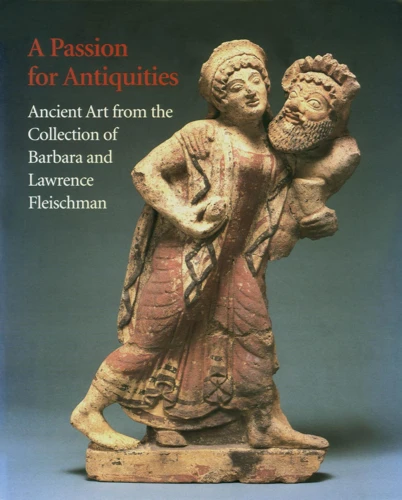
The influence of African mythology can be seen in various aspects of modern culture, from literature and art to music and film. One notable area where African mythology has left its mark is in the realm of literature. Writers, both African and non-African, have drawn inspiration from African mythological themes and incorporated them into their works. Novels such as “American Gods” by Neil Gaiman and “Anansi Boys” by Terry Pratchett pay homage to African deities and trickster figures, while authors like Chinua Achebe and Ngũgĩ wa Thiong’o explore traditional African spirituality in their storytelling. In the world of visual arts, African mythology has influenced the works of renowned artists such as Romare Bearden and Yinka Shonibare, who use imagery and symbolism from African myths to convey cultural and political narratives. Music is another realm where African mythology has made its presence felt. The rhythms and melodies of African music often reflect the spiritual and mythical aspects of the culture, and contemporary artists like Fela Kuti and Angelique Kidjo continue to draw inspiration from ancient African myths in their music. The film industry has also embraced African mythology, with movies like “Black Panther” incorporating elements of African spirituality and folklore into their narratives. This cinematic representation serves to not only entertain but also educate and promote a deeper understanding of African mythology. The influence of African mythology on modern culture is a testament to its enduring relevance and power to captivate and inspire across different artistic mediums.
Conclusion
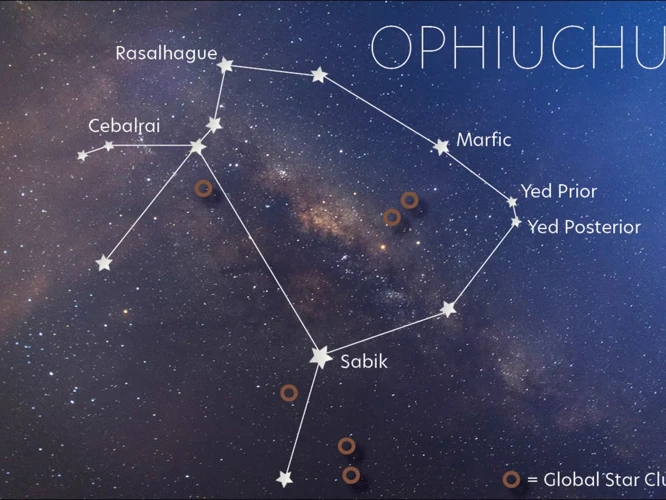
In conclusion, African mythology offers us a captivating glimpse into the rich cultural heritage and diverse belief systems of the continent. From the enchanting creation myths of Yoruba and Zulu mythology to the intriguing tales of Anansi, Osiris, Oya, and Shango, we see how these ancient stories have shaped the understanding of the world and the gods and goddesses that govern it. The regional variations in African mythology, from West to East, Central to Southern Africa, showcase the unique perspectives and traditions of different communities. The symbolism and iconography found within African mythology add another layer of depth and meaning to these narratives, reflecting the interconnectedness between humans, nature, and the spiritual realm. African mythology’s influence can be seen in various aspects of modern culture, from literature and art to music and film. It continues to spark curiosity and inspire further exploration into the diverse mythologies of the world. As we immerse ourselves in the world of African mythology, we gain a greater appreciation for the depth of human imagination, the power of storytelling, and the ways in which ancient beliefs continue to shape our understanding of the world today. As we conclude this comprehensive guide, we invite you to continue your exploration of mythology and its profound impact on our collective consciousness.
Frequently Asked Questions

1. What is the significance of African mythology?
African mythology holds great significance as it offers insights into the cultural, spiritual, and historical aspects of African societies. It provides a framework for understanding their beliefs, values, and traditions, and helps to foster a sense of identity and pride among African communities.
2. Are there common themes in African creation myths?
Yes, while there are numerous variations, many African creation myths share common themes such as the existence of a supreme being or creator, the idea of a primordial void, and the emergence of the world through divine actions or processes.
3. Who are some prominent gods and goddesses in African mythology?
There are numerous prominent deities in African mythology, including Anansi, the Spider Trickster from West African folklore; Osiris, the God of the Afterlife in Egyptian mythology; Oya, the Goddess of Wind and Storms in Yoruba mythology; and Shango, the God of Thunder and Lightning in Yoruba and Bantu mythology.
4. What role does symbolism play in African mythology?
Symbolism plays a significant role in African mythology, with various animals, natural elements, and objects carrying symbolic meanings. For example, the lion often represents strength and courage, while the river symbolizes life and purification.
5. How does African mythology influence modern culture?
African mythology continues to influence modern culture in many ways. Its stories and characters have inspired literature, art, and film across the globe. Additionally, African religious practices and beliefs have blended with Christianity and Islam in some regions, creating unique syncretic traditions.
6. Are there regional variations in African mythology?
Yes, African mythology exhibits regional variations across the continent. West African mythology, for instance, differs from East, Central, and Southern African mythologies in terms of gods, stories, and cultural practices due to the diverse ethnic groups and geographical factors.
7. How were African mythologies preserved without written texts?
African mythologies were preserved through oral tradition, where stories were passed down from generation to generation through spoken word, song, and performance. This allowed for flexibility and adaptability in retelling the myths.
8. Was there a connection between African mythology and daily life?
Absolutely. African mythology was intertwined with the daily life of African communities. It provided explanations for natural phenomena, influenced rituals and ceremonies, and guided moral and social codes, fostering a sense of belonging and an understanding of the world.
9. Can African mythology be seen as a form of spirituality?
Yes, African mythology can be seen as a form of spirituality as it encompasses beliefs about the divine, the role of ancestors, and the interconnectedness of humans with the spiritual realm and natural world.
10. How has colonization impacted African mythology?
Colonization introduced external influences and imposed foreign religions on African cultures, leading to the decline and erosion of some traditional mythologies. However, many aspects of African mythology have persisted and continue to be practiced and celebrated today.
References
Frequently Asked Questions

1. Who were the major gods and goddesses in African mythology?
The major gods and goddesses in African mythology varied by region, but some notable ones include Anansi, the spider trickster; Osiris, the god of the afterlife; Oya, the goddess of wind and storms; and Shango, the god of thunder and lightning.
2. What are the regional variations in African mythology?
African mythology has different regional variations, including West African, East African, Central African, and Southern African mythology. Each region has its unique gods, goddesses, and creation myths.
3. What are some famous African creation myths?
Two famous African creation myths are the Yoruba mythology creation story, which tells of how the world was formed by the god Olodumare, and the Zulu mythology creation story, which involves the sky god Unkulunkulu creating humans from reeds.
4. How did African mythology influence modern culture?
African mythology has had a significant impact on modern culture, particularly in the realms of literature, art, and popular culture. Many African myths and deities have been featured in novels, movies, and music, showcasing the rich cultural heritage of the continent.
5. What role does Anansi play in African mythology?
Anansi, also known as the Spider Trickster, is a popular figure in African mythology. He is a cunning and clever character who often uses his intelligence to outsmart others. Anansi is known for his mischievous adventures and is considered the bringer of stories and wisdom.
6. What is the symbolism and iconography in African mythology?
Symbolism and iconography play a crucial role in African mythology. Animals, plants, and natural elements often represent specific qualities or powers attributed to gods and goddesses. For example, the lion symbolizes strength and courage, while the snake represents fertility and healing.
7. Are there any female deities in African mythology?
African mythology features several powerful and revered female deities. Oya, the goddess of wind and storms, is one such example. Other female deities include Mawu, the goddess of the moon, and Yemaya, the goddess of the ocean.
8. How were humans created in African mythology?
Creation myths in African mythology often involve the divine beings shaping or molding humans from various materials. In some stories, humans are created from clay, while in others, they are formed from reeds or brought into existence through the breath of a god.
9. What are some key themes in African mythology?
Some key themes in African mythology include the balance between good and evil, the importance of community and ancestral teachings, the power of nature, and the interplay between humans and gods. These themes reflect the worldview and values of different African cultures.
10. How do African myths explain natural phenomena?
African myths often provide explanations for natural phenomena such as thunderstorms, eclipses, and the movement of celestial bodies. For example, Shango, the god of thunder and lightning, is believed to be responsible for storms, while eclipses are often attributed to cosmic battles between celestial beings.
References
- 12 African Gods and Goddesses you Should Know and …
- African Mythology: The Heartbeat of Spirituality – Culture Bay







